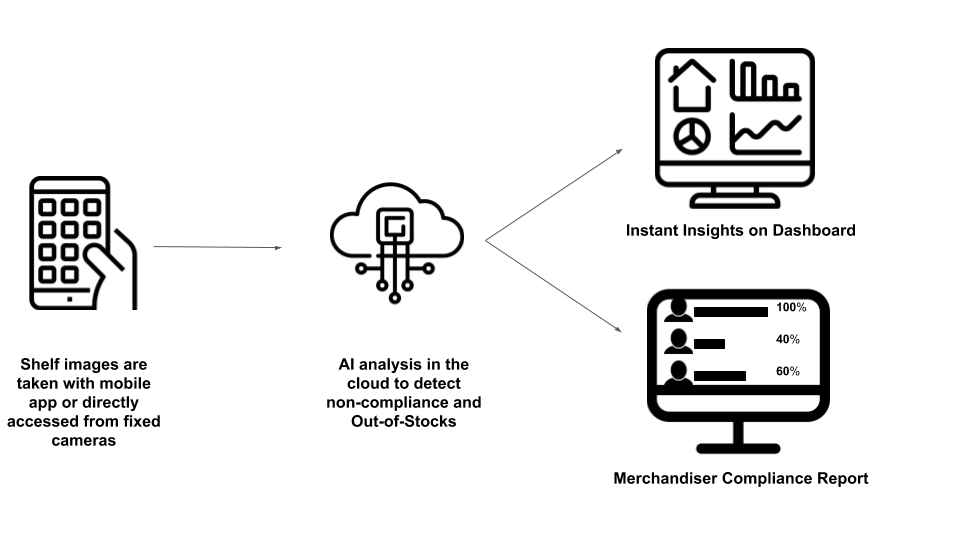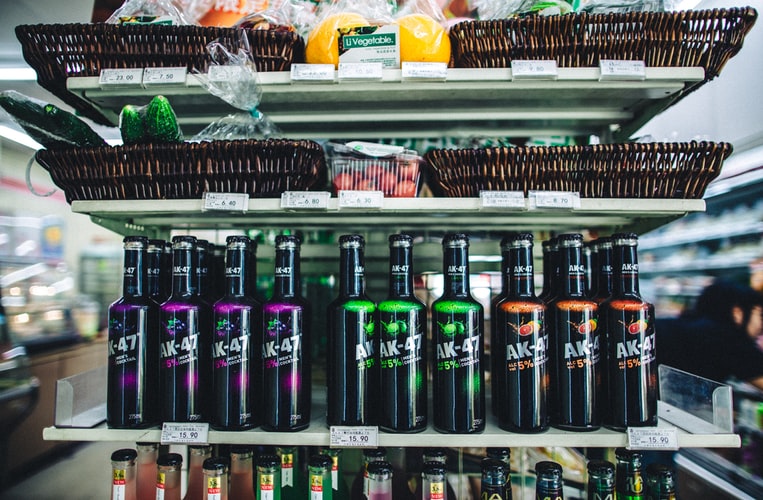ShelfWatch helped one of the biggest consumer goods companies in the world improve merchandising compliance by 30% across 100,000 traditional trade stores in India.
CPG brands spend a substantial amount of money on their retail partners to improve their in-store presence and promotion execution. These slotting, display and pay-to-stay fees can quickly add up, impacting their bottom line. Therefore, it is important for CPG manufacturers to ensure that they get the space they pay for. They must also ensure that the reps are doing their job properly to secure the best possible retail execution.
In this blog, we walk you through how ParallelDots automated shelf monitoring tool ShelfWatch, helped the client improve their merchandising compliance with its image recognition technology.
Client's Unique Initiative
Our client, a global personal and home care brand with a great portfolio of iconic brands wanted to understand the merchandising compliance of their dedicated branded sections in traditional trade in India. Before approaching us, the client did a study and found that stores with dedicated branded sections generated additional sales of 7-10% per month.
With the goal to generate additional sales lift of 7-10%, the client also wanted to understand the compliance of their branded sections after the visit of merchandisers.

The client wanted to deploy Image Recognition to automate the compliance checks from the photos captured by the merchandisers after their visits.
In addition to understanding the merchandising compliance, the Client also wanted to understand how the retailers maintained their branded sections. They recruited a third-party field agency to audit these stores once in a month. They wanted to understand the compliance rate of their branded sections in different stores and reward the stores maintaining higher compliance.
In addition to analyzing the images captured by the merchandisers, the client also wanted the photos captured by the field auditors to be analyzed by Image Recognition to rank the stores.
The Challenge

1. The Scope of the Project
The study is carried out at a massive scale with more than 500 different types of merchandising assets across 1,000 SKUs deployed to more than 100,000 stores. The scale and scope of the project meant that the total number of images captured every day would exceed 75,000 and 1.5 million per month.
2. Widely Varied Merchandising Materials
Another challenge for the neural network-based Image Recognition technology was that the merchandising materials would change every month and therefore, the network has to be trained fast and deployed before merchandisers start installing it in the stores.
The Approach- ShelfWatch Difference

Before ShelfWatch
The client's initial approach was to manually analyze the store photos and measure merchandising compliance. Manual evaluation posed several challenges, some of which are mentioned below:
1. Low Turnaround Time
Manually analyzing data on such large scales consumed a lot of time, causing a delay in insight generation. This further caused a delay in identifying the bottlenecks and taking correcting measures on time. As a result, there always remained a huge gap between the expected planogram and the reality of the store.
2. Low Accuracy
There is a lack of uniformity in stacking patterns across retailers which leads to different kinds of pictures in terms of stock orientation, lighting, and positioning. Field agents struggle with maintaining consistency with the data they collect because such non-standard pictures take longer to analyze.
3. Incomplete Analysis
In the pursuit of standard images, field agents fall prey to other types of human perception biases. Very often it happens that while collecting data, the reps take multiple images of the same shelf from various angles. This is a serious problem as it may lead to double counting of shelf metrics (such as share of the shelf) which in turn affects insights.
4. Expensive
Since manual audits were incompetent and fell short of providing the desired planogram compliance, the total money spent on the study could not be compensated by the overall sales.
Due to the above factors, the client was not able to take action on the insights in a timely manner and therefore, the overall compliance was around 55%.

After ShelfWatch
We deployed ShelfWatch after training the AI on all the SKUs and merchandising materials. We overcame some of the challenges due to the novelty of our technology which is listed as under:
- Data Scarcity: As the merchandising materials would change every month, there was never enough data to train the neural networks to detect these materials with very high accuracy
- Image Quality: Due to the chaotic nature of General Trade, not all SKUs were placed in the ideal orientation for the AI to detect easily.
These issues were overcome utilizing the AI architecture of ShelfWatch which requires only one high-resolution image to train the AI. These high-resolution images, also known as pack shots or image masters, were shared by the client at the start of the month. Within 48 hours, AI was trained on these merchandising materials to start detecting these materials.
1. Integration
Once the AI training was set-up, field images were automatically downloaded by the ParallelDots team through SFA integrations with the client’s asset management system. The images were downloaded at a fixed time every day along with meta-data such as store name, geo-location, merchandiser’s name, time of capture and merchandiser’s inputs.
2. Daily Monitoring Made Easy
- As manual analysis took time, it slowed down the daily monitoring process, leading to delayed insights and corrective actions.
- As soon as all the images were analyzed, ShelfWatch sent auto-generated daily reports to the supervisors that allowed them to track their own in-store execution. The decreased turnaround time helped with faster corrective measures and better overall execution.
The Result- 30% Improvement in Merchandising Compliance
With the help of ShelfWatch's image recognition technology, the client was able to get accurate and timely insights on store conditions which allowed the merchandising conditions to improve from 55% to 85% with 2 months of roll-out. This 30% increase in merchandising compliance also contributed to an additional sales lift of 2%. Impressed by ShelfWatch's efficiency, the client is now rolling out ShelfWatch to modern trade stores to understand the Share of Shelf (SOS) for their brands.
Liked the blog? Read our other blog to understand how image recognition can help your brand achieve a Perfect Store.
Want to see how your own brand is performing on the shelves? Click here to schedule a free demo.


